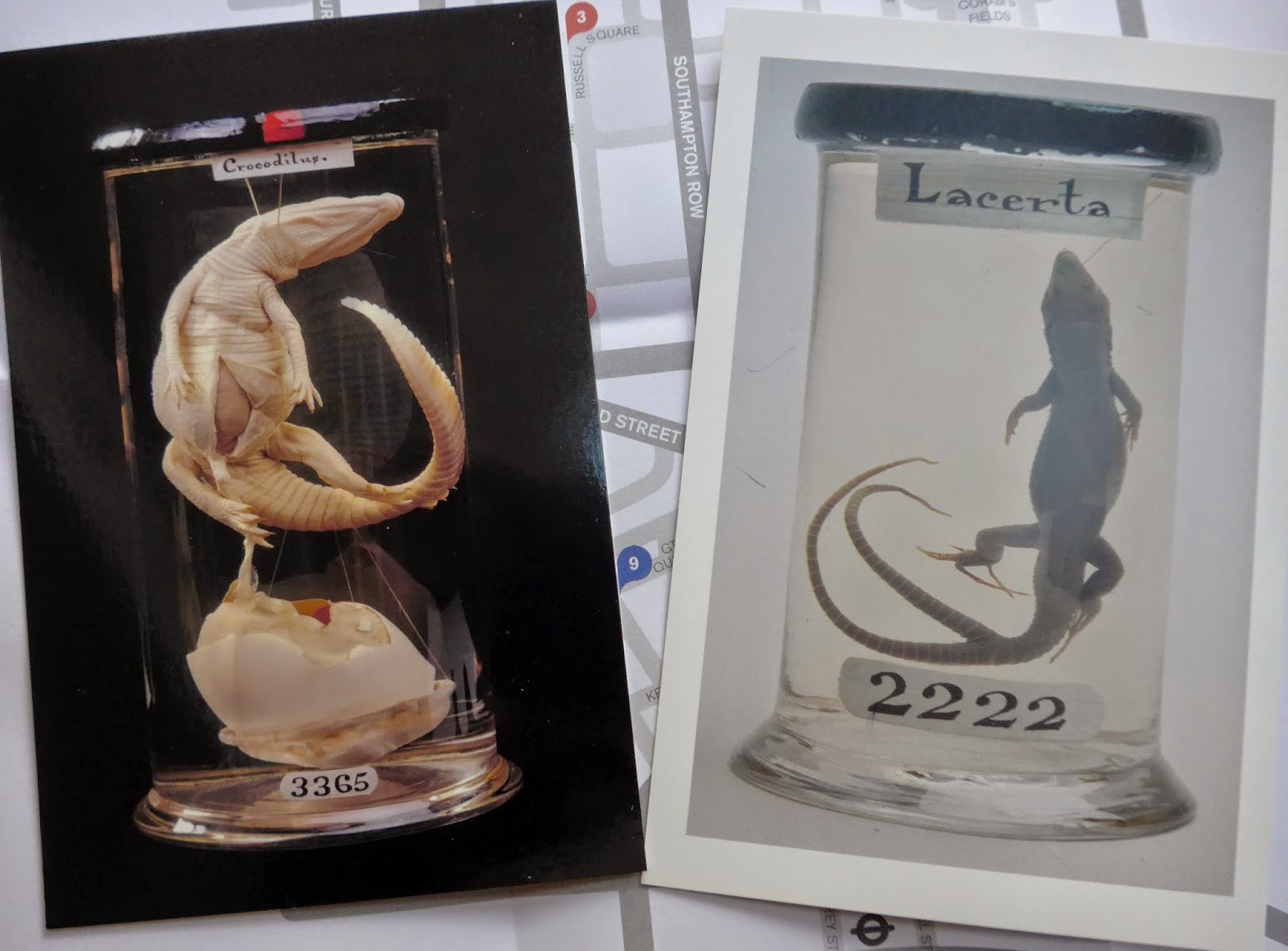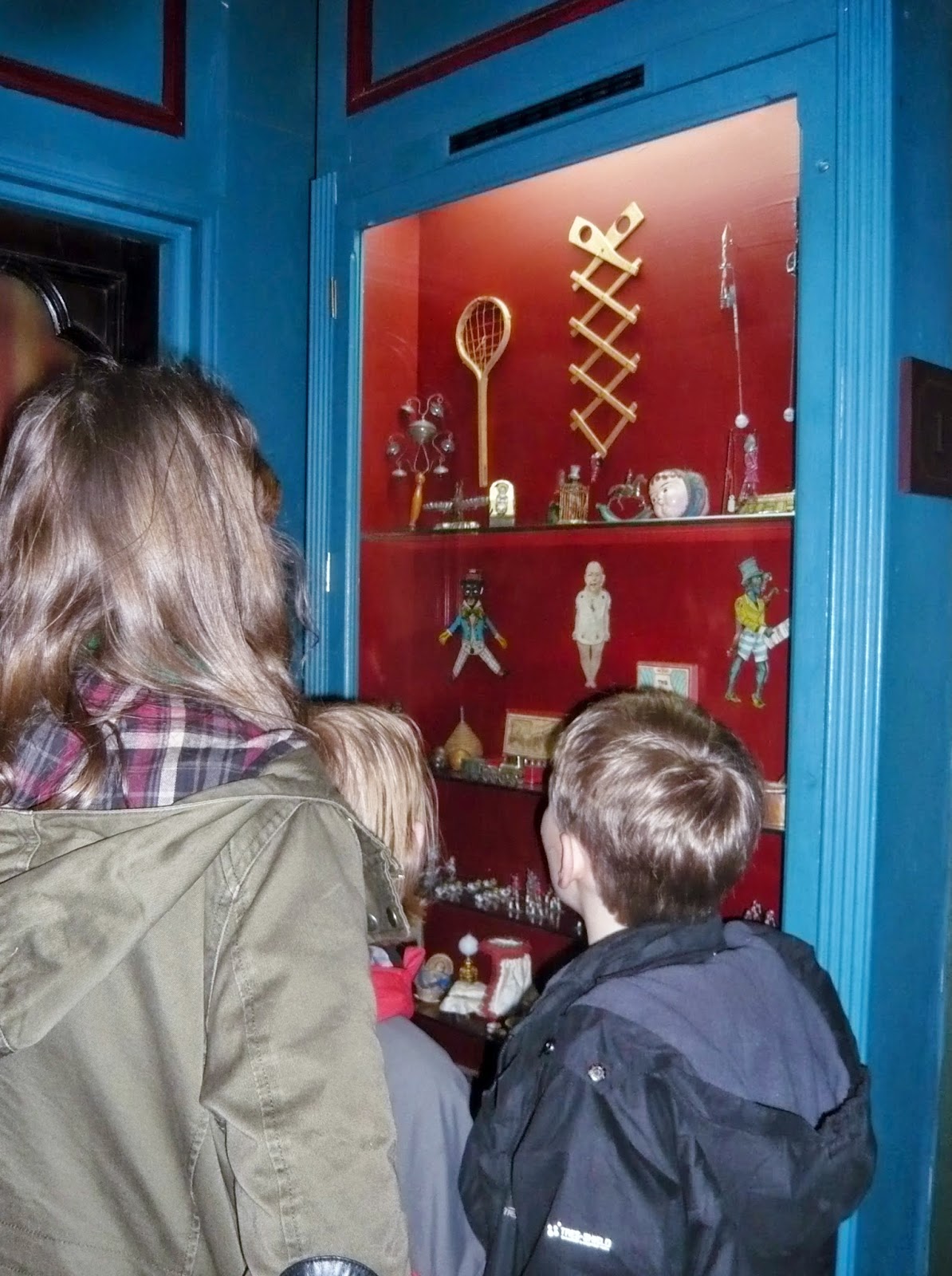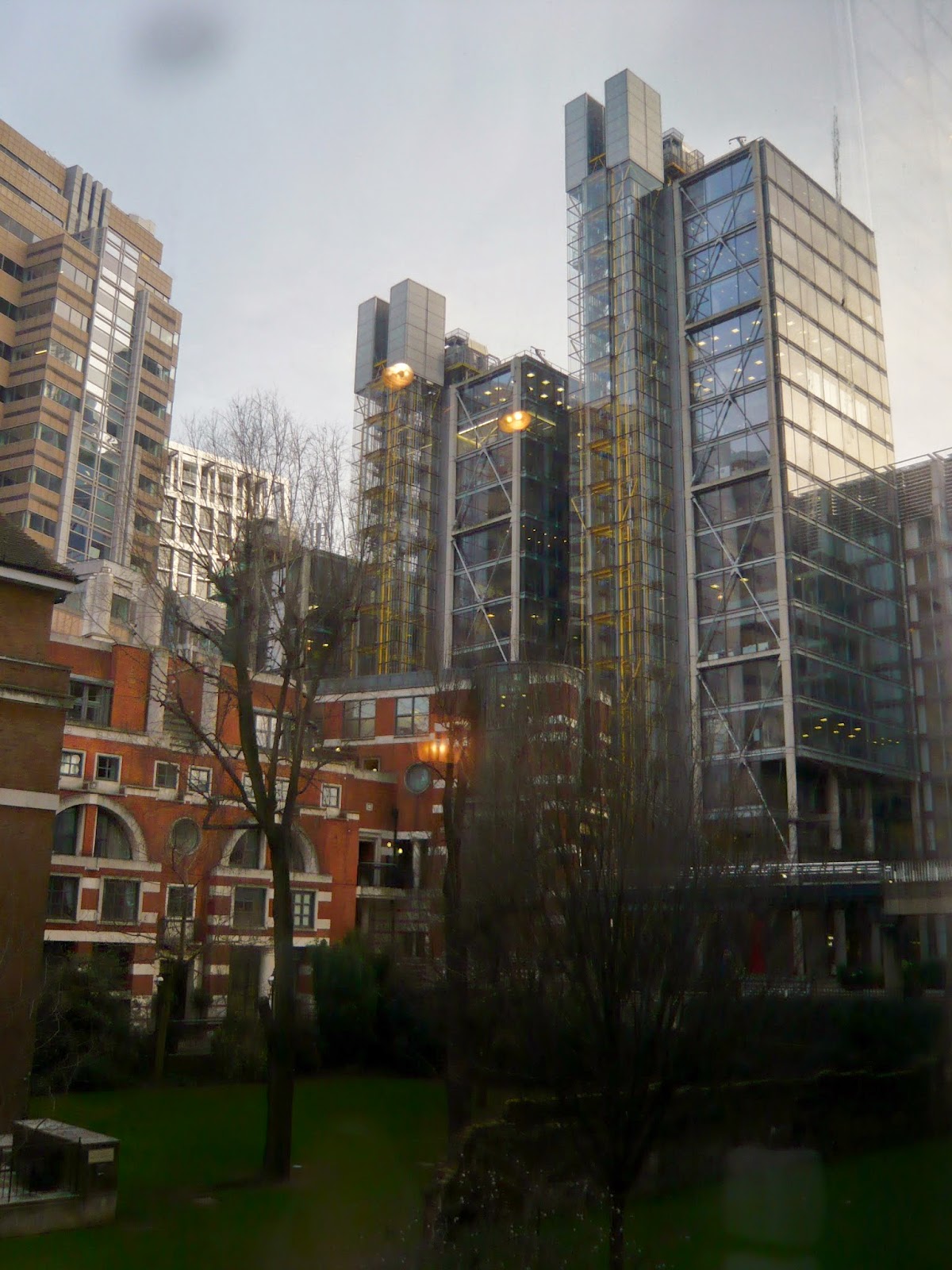My husband had a day off, he did work most of Christmas,
the kids had gone back to school,
we had a day off to ourselves
to mooch around central London, have coffee, have lunch,
take in a couple of roof-top views and have cocktails.
More on that later...
First, he graciously agreed to go to a museum.
We went to the Hunterian Museum at the Royal College of Surgeons.
Having had a coffee in Lincoln's Inn Fields
we weren't quite sure which building we were heading for, it wasn't signed.
Oh apart from this...
We went in and asked if we were in the right place,
were given a badge and sent,
"left up the stairs, on the first floor".
My heart sank when we arrived.
No photography.
Perhaps an overly dramatic reaction, but I had been hoping to blog about this visit.
For this blog I take photos in order to tell the story of what we look at in museums,
what we talk about and the objects that capture our imagination.
I put my camera away.
And now it's just words to describe what we saw
and give you a picture of the Hunterian Museum.
First impressions,
It was like walking into a huge sweet shop.
Jars full of goodies, floor to ceiling, two stories high.
But that's where the analogy ends,
As we looked more closely at the contents of those jars,
we began to have a kind of 'child-catcher' moment.
Unlike the kids in Chitty Chitty Bang Bang though, we hadn't been duped
but the 'wow' moment went from one of "how beautiful"
to "is that what I think it is?".
We should not have been surprised however, as these specimens
have been collected to train surgeons in human anatomy, warts and all.
This collection of anatomy, pathology, osteology and natural history
was begun by John Hunter in the 18th century who accrued around 15,000 specimens.
It was one of those museums, where you go and get each other.
"Come and look at this."
"Have you seen the giant?"
A 'wow moment' as I took in all 7' 7" of Charles Byrne's skeleton.
He called himself the "Irish Giant",
his stage name as he became a popular source of entertainment.
Making money out of life and death, John Hunter paid £130 for his body in 1783.
Obtaining bodies was not without controversy.
Resurrection men often supplied the bodies for London's anatomists.
During the 18th century grave robbing from London's poor was common
as new laws allowing the dissection of executed murderers
couldn't meet the demand for bodies.
However the rich allowed surgeons to conduct post-mortems on themselves.
Perhaps for the cache and thrill of being involved in new technology and innovation?
John Hunter carried out post-mortems on family and friends
and showing total commitment to the cause of anatomy,
he himself was dissected after his death in 1793.
Museums work hard at curating exhibitions
helping visitors to connect with objects and respond to what they see.
The Huntarian Museum is at a huge advantage here,
no lack of responses, rarely do my toes curl in a museum.
I give you surgical instruments.
We winced,
especially at the neolithic flint scraper, graver and borer helpfully displayed on a cranium.
"A razor shell and a sharpened chicken bone. Really?"
"To think, these tools will have all have actually been used."
It's probably kind of obvious that in understanding any anatomy, human or otherwise,
it's the anomalies that fascinate us
and help us understand how things work.
That Lizard on the right has two tails.
There is plenty of this kind of thing at the Hunterian Museum.
Morbid anatomy.
You'll have to go and see for yourselves.
There are things that cannot be left to the imagination.
Like the pig epididymis injected with mercury.
"Isn't that beautiful, it looks like a strings of pearls."
At home I googled it,
perhaps now not so beautiful,
"... the thin tubes that carry sperm from the testes to the male reproductive organ..."
Upstairs in the Hunterian Museum,
they present the more recent history of modern day surgery.
You can watch the film 'Surgery in Action'. I didn't,
but was fascinated to read about the post-war development of neurosurgery.
This was part of our day out, we needed to get on.
"Shall we go now, there's only so much I can stomach?."
Honestly no pun intended.
"I don't think I can eat lunch now."
We left, reverently walking past the past masters and presidents of the Royal College of Surgeons.
Seriously though, our feelings about lunch aside,
all that history in there that has helped get us to this place
where we understand so much about the human body that incredible operations take place,
saving people's lives.
"Yeah and did you see those jars of penises?"
It didn't take long before we were ready for lunch.
As for the cocktails, a Christmas treat in January, we had them on floor 32 of the Shard.
Cheaper than going to the top!
The Hunterian Museum at the Royal College of Surgeons is not for the squeamish.
So kids would love it, I'm taking mine next time.
I saw some great activity trails they could do.
Details on the website, here.








.JPG)











.JPG)
.JPG)
.JPG)
.JPG)




.JPG)















.JPG)
.JPG)
.JPG)
.JPG)
.JPG)
